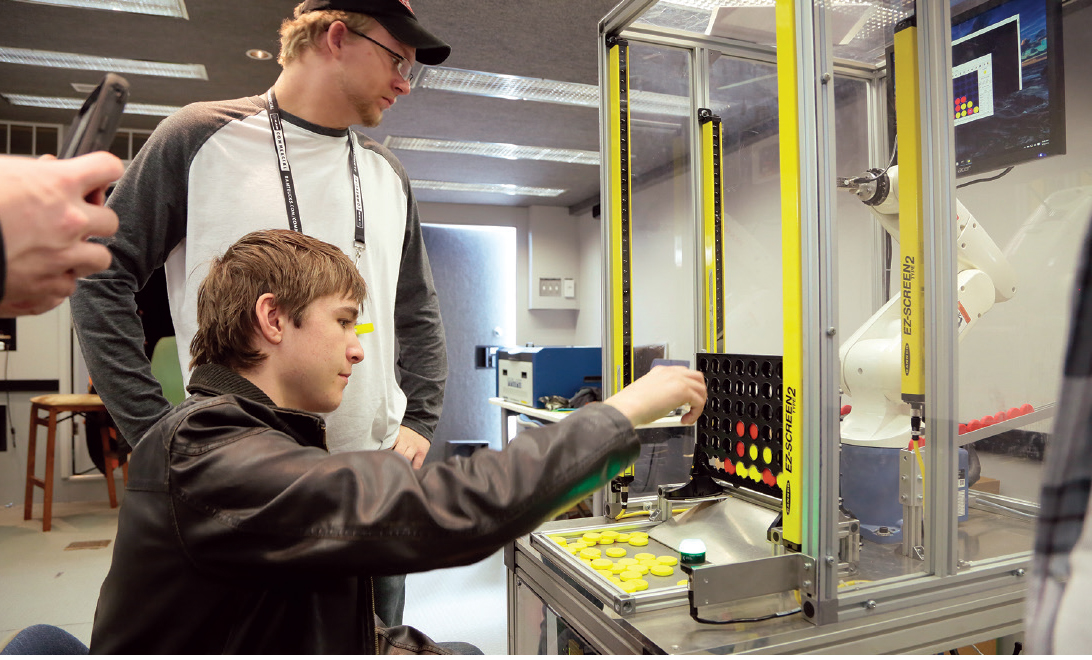This article was published in the April 2018 edition of NTEA News.

With industry talent at a premium, The Work Truck Show® 2018 offered resources to help attendees recruit, retain and engage employees. This year, experts explored strategies to keep top talent, enhance recruiting approaches and manage generational differences in businesses.

Mobile learning center
The mobile learning center, presented by Visionary Center for Sustainable Communities, was introduced at this year’s Show as an on-the-go classroom located on the Ride-and-Drive grounds. Attendees experienced examples of manufacturing technologies and systems available today and being developed for the future — such as 3-D printing and scanning, laser cutting and robotics. The interactive center also featured online training resources and additional information on education and career pathways in manufacturing.
Solutions for Building a Skilled Manufacturing Workforce
During this session, experts emphasized that demand for skilled workers in the manufacturing industry is on the rise. They cited studies indicating 3,400,000 manufacturing jobs will likely be needed in the next decade between baby boomer retirements and new jobs attributed to economic expansion. However, only 1,400,000 of those openings may be filled, creating an outage of roughly 2,000,000 manufacturing jobs due to the skills gap. Even still, individuals are not pursuing educational pathways to learn the necessary skills — mainly because many do not realize manufacturing is a viable and growing career path. Presenters identified a number of existing misperceptions related to manufacturing jobs and emphasized the importance of inspiring students. The audience gained solutions for helping educational institutions and manufacturers build a pipeline of skilled employees to fill demand.
Building a Championship Team
According to Jen Shirkani, author and keynote speaker of Penumbra Group, exceptional performance is the perfect alignment of skills, rewards, feedback, management style, measurement and culture. From her perspective, keeping employees engaged requires staying in-tune with what is most important to them — finding ways to creatively match cultural features with their motivating factors. During this session, Shirkani shared employee performance drivers and easy-to-apply techniques for their engagement, encouragement and development.
I Hired Workers But Human Beings Showed Up — Now What?
During her presentation, Cyndi Gave, president of The Metiss Group, asked: Are you confident all your employees are performing at their highest potential? Are you doing everything you can as a leader to accelerate the performance of your direct reports?
She shared seven common reasons why employees leave a company: job not as expected; job doesn’t fit talents and interests; no hope for career growth; little or no feedback/coaching; feel devalued and unrecognized; sense of being overworked and stressed out; and lack of trust or confidence in leaders. Session participants explored actionable cultural approaches, techniques to accelerate performance and how to tailor leadership practices to direct reports’ styles. Gave defined what it looks like to control versus empower, explaining important aspects of leadership skills development and providing practical application.
Generation Next Leadership Workshop
Shirkani also presented at the Generation Next Leadership Workshop, discussing ways to leverage EQ (emotional intelligence) to engage and motivate employees and associates. She emphasized leaders with high EQ can communicate effectively, provide balanced feedback, guide others through ambiguity, use humor to build rapport, read and respond to the team’s leadership needs and remain optimistic, even in the face of difficulty.
According to Shirkani, studies show a direct correlation between high EQ and successful leadership. But managers can fall into particular pitfalls that hurt their credibility and hard-won success, impeding the ability to use their EQ. Session attendees learned strategies for building a strong case for the importance of both IQ and EQ. Takeaways included practical examples and new skills to identify and overcome unique traps that can trip up even the most successful leaders.
Find more workforce development resources, including webinars and training opportunities, at ntea.com/workforcedevelopment.